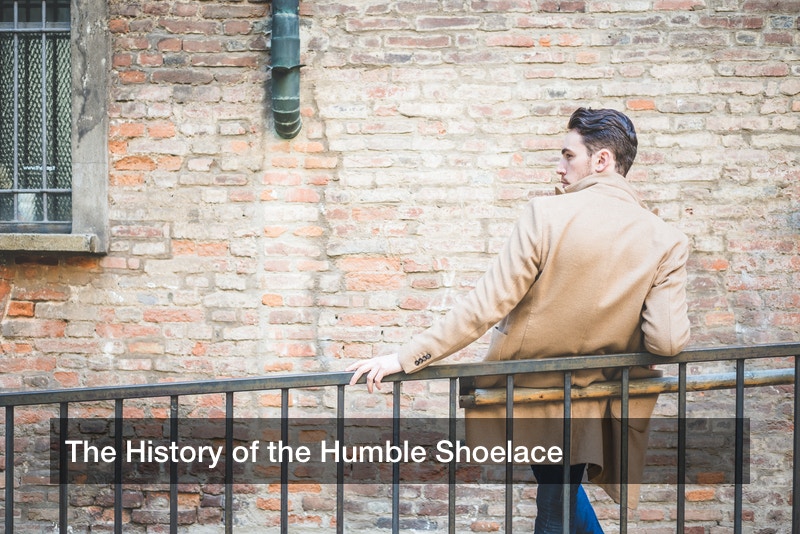
UPDATED 11/9/20
Today there are over 28,000 shoe stores in the United States, and every year Americans spend close to $30 billion dollars on sneakers, heels, awesome shoelaces, no-tie kids shoe laces, and unique shoelaces and shoes of every description. As much as we depend on our shoes, most of us don’t know a lot about the history of where our shoes, and our shoelaces, in particular, come from.
The Dawn of Shoelaces

Long before anyone had ever dreamed of no-tie kids shoe laces, our ancestors were wearing them. The oldest existing lace-up shoe was discovered in 2010 and is a 5,500-year-old moccasin made of leather. We think that late Neolithic humans used special shoelace designs to distinguish among different tribes, but more importantly, the shoe laces were for keeping men’s shoes tight. Early human males spent a lot of their time running after food on long hunts, and it was important that shoes fit well. Despite the enormous distance in time between us and the people living 5,500 years ago, shoes seem to have changed very little in design. In a totally other part of the world we’ve found some shoes that are 3,000-years-old, and though they’re made of deer and bear skins, they are basically the same design as the older shoes: and ours.
Those Ancient Romans
By 2000 BC, both Greek and Roman civilizations were wearing leather pieces of footwear that wrapped around the feet and ankles using laces made of leather. They were much like moccasins and were called carbatine or “made of rawhide.” In contrast to our shoes, though, these could be worn on either foot. The Greeks and the Romans were picky about their footwear and ridiculed people who couldn’t tie their laces neatly.
Brogues and Hobnails
We still haven’t gotten to no-tie kids shoe laces, but shoes were changing. The 1500s introduced shoes called brogues, worn in Ireland and Scotland, which were a lot like our modern boots. The shoes were able to drain quickly after walking through wet ground because of perforations along the sides, which also served as decoration. The first brogues closed with a buckle rather than laces, but soon a lacing system just like the ones we use today came into use. The eyeholes were sewn into shoes until the 1840s when metal eyelets were invented and quickly became the standard. In World War I, soldiers took hobnails and put them in the soles of these shoes in order to increase traction and grip for ice and snow.
The First Shoelaces
Although humans had been using shoelaces for a long time, the first official shoestring patent belonged to Havey Kennedy, an Englishman, and was granted in 1790. His shoestrings were unique because they had aglets, or sheaths, to protect the ends of laces to keep them from unraveling and make them easier to get through the holes. People quickly appreciated the brilliance of the aglet and shoelaces of that style became standard.
Today’s No-Tie Kids Shoe Laces

There have always been people who didn’t prefer shoelaces, and in 1968 the Puma sneaker company made the first Velcro fasteners for shoes. These proved to be very popular until the 21st century when Velcro fasteners started to look outdated and plain. People didn’t want to tie their shoes, but they wanted an alternative to Velcro closures. Enter the no-tie shoe laces, which are just now coming into their own.
We humans have been lacing up our shoes for as long as we’ve been running on our feet. Tieless laces are just the latest advance in shoe lace technology. Who knows what we’ll create next?
A reputable shoe store offers all of these styles, and more. if you are looking for a well-crafted running shoe or a variation of an ancient roman laced shoe boots with hobnails, an online shoe store has the match you are looking for.
Regularly purchasing new shoes is important for runners. Worn out running shoes can lead to injury. Without proper foot support, a runner can experience knee issues or shin splints. It can be difficult to know when you need to purchase new running shoes. One way to determine if you need to upgrade your running shoes is if the tread is starting to wear down. Another way would be to test the cushion of the shoe. Press down on the insole with your thumb and see if the cushioning bounces back. If it’s too firm, it will be time to upgrade.
Like this: 1 lace, 2 eyelet shoe lace length, 9 eyelet laces, a shoelace, af1 lace length, af1 shoelace length, aglet for shoes, aglet hole, chuck taylor shoe laces, flat shoe strings, leather shoelaces for sneakers, shoelace manufacturers, soft shoelaces, work shoe laces, 2 shoelaces patterns, 3 eyelet dress shoe lacing, 3 hole shoe laces, 6 eyelet boot laces length, aesthetic shoe laces, aglet phineas, aglets on shoelaces.


